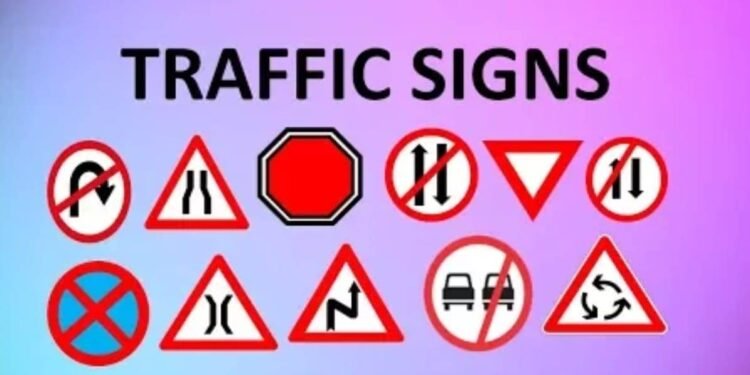Last Updated on October 4, 2023 by Flavia Calina
Understanding road signs is essential to the safe operation of your vehicle. Traffic signs communicate important safety messages in a standard language using easily-recognized pictograms. These symbols help bridge language barriers, close color vision deficiencies, and address illiteracy.
Lane warnings tell you when a divided highway or multi-lane roadway is about to split into two ways with opposite-direction traffic. It would be best if you stayed in your lane.
Text
Directional traffic signs communicate where drivers should enter, exit, and go in a facility’s roadway system. These prevent accidents and ensure that traffic moves efficiently.
Signs containing text have been used for quite some time, with the oldest being milestones and wooden fingerposts. More recent developments include pictorial signs that replace the wording with symbols, allowing more information to be conveyed in less space.
Several studies have demonstrated a relationship between personality traits and the comprehension of traffic direction signs. For example, high agreeableness and conscientiousness are associated with safe driving, better planning and self-control, and correct decisions. In contrast, a high level of extraversion weakens vigilance and leads to impulsive behavior, which interferes with the correct comprehensibility of road signs.
It also turned out that the level of comprehensibility of non-standard symbolic and text signs is unrelated to their familiarity (encountering on the road). These experimental signs contained too many messages that could not quickly be adequately integrated into human attention resources.
Symbols
Symbols can grab the driver’s attention and convey important information. For example, a yellow and red diagonal stripe with a white arrow shows that the lane ahead is for left turns only. Adding lanes to the roadway shows this by an additional lane sign. Traffic should stay in the lane for as long as possible and only pass when it’s safe.
These show the maximum and minimum speed limit for usual driving conditions on the road. They’re used on highways and expressways and are designed to provide safety for all road users.
A recent study examined the comprehensibility of four non-standard types of signs. The relationship between the personality traits of drivers and understanding them. Drivers with profiles clustering into categories based on extra version, agreeableness. And openness to experience showed the highest comprehensibility of symbolic regulatory signs. The lowest comprehensibility was found in the group of text warning signs. More familiar ones should accompany to prevent misunderstanding.
Colors
The colors used in traffic signs have a specific meaning, and they can help you determine the direction of travel and other information before you even read the text. There are also standardized colors for different categories of traffic signs, so you can be sure that the information you are seeing is consistent and accurate.
For example, white signs with black letters and symbols indicate regulations such as speed limits. Yellow signs with black letters or symbols or a red circle with a slash through it are warnings, such as school zones or upcoming curves.
Guide signs usually have a green background but can also be blue or brown. They serve as navigational aids on local and interstate roadways, indicating the location of exits, businesses, and other points of interest. In addition, they can provide you with information on road user services and evacuation routes. You can also find guidance to sites of recreational and cultural interest on these signs.
Lines
WHITE LINES painted on the pavement separate lanes of traffic moving in opposite directions. You must stay within your lane unless you are passing another vehicle. A broken line to the right of a solid yellow center line indicates that you may pass when it is safe. However, if the solid line is closer to you, you should only cross it if you pass.
SHARP TURN SIGNS (RIGHT AND LEFT) indicate that the road ahead bends sharply in one direction and then back in the other. Slow down substantially and prepare to maneuver through the curve.
SERVICE SIGNS, generally square or rectangular, indicate the location of hospitals, service stations, restaurants, and motels along your route. These are sometimes accompanied by flaggers who use STOP and SLOW paddles to control traffic in work zones. Occasionally, you will see flaggers with red flags that they wave to signal traffic to slow or stop. Read more exciting articles on Today World Info









